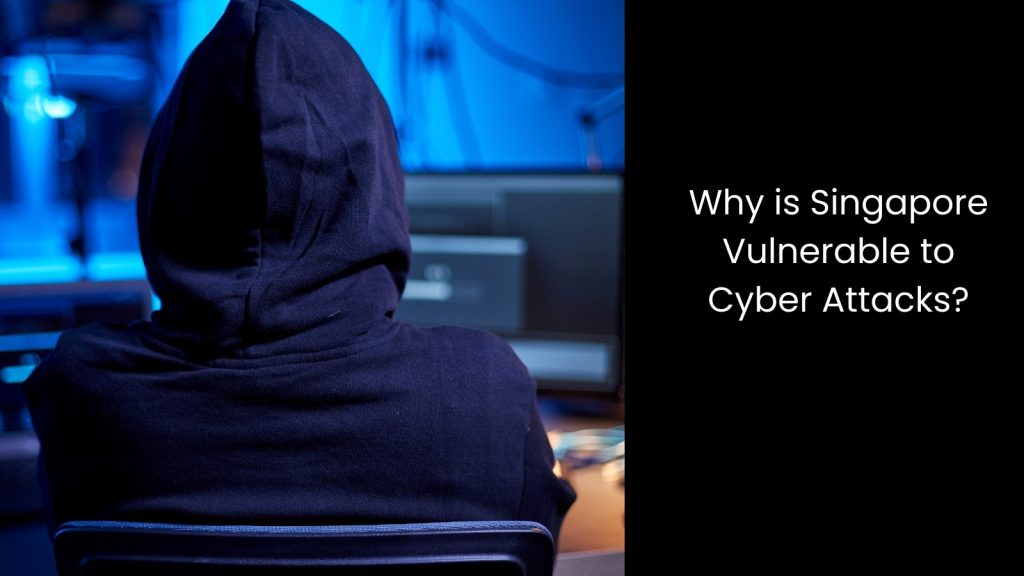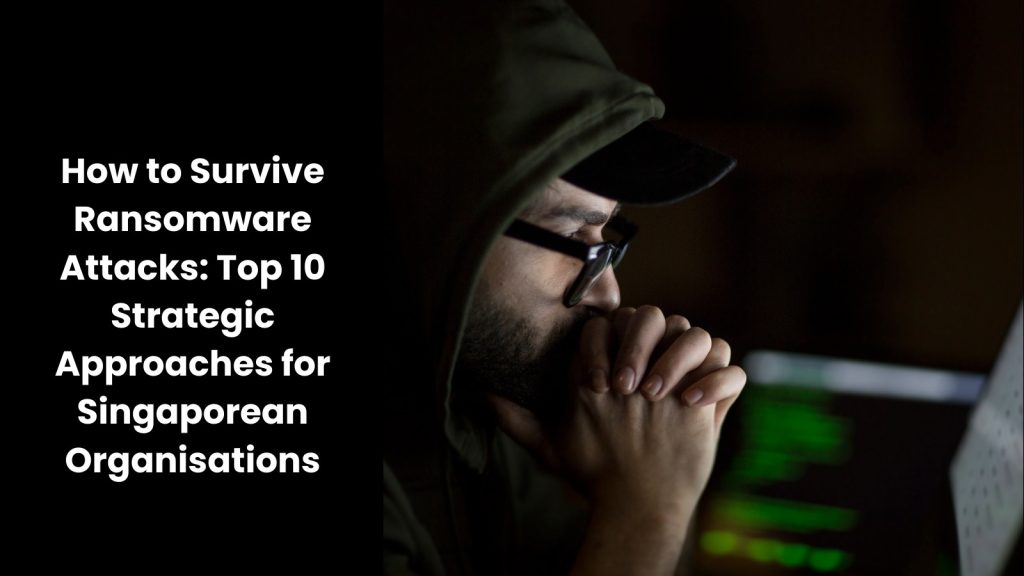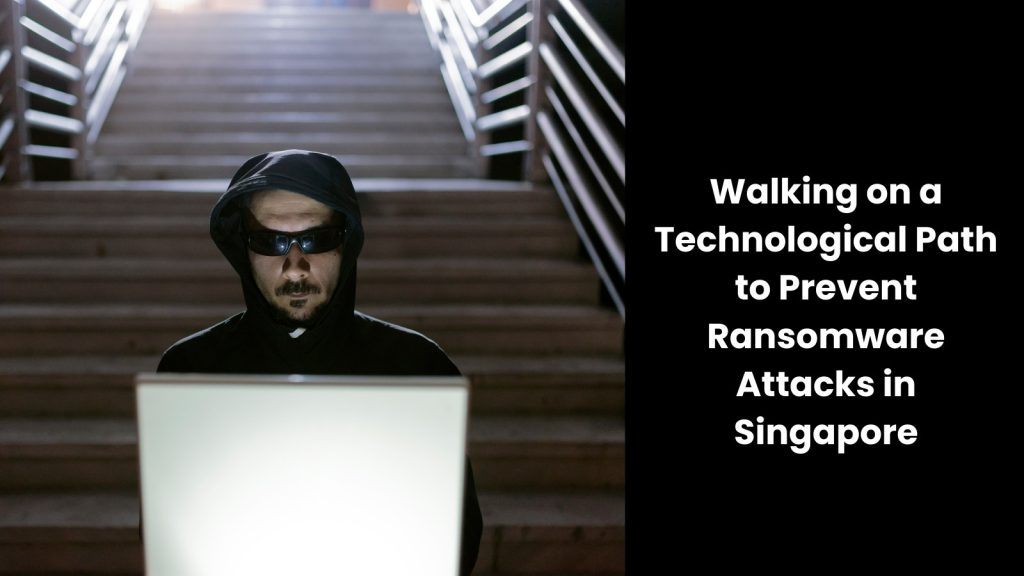Did you know that Singapore recorded the highest number of ransomware attacks in 2023? According to industry surveys, there is a significant rise in ransomware attacks on Singaporean organisations when compared to the reports of 2022. As it is said, 84% of organisations surveyed said they were victims of ransomware attacks. Previously, this number was limited to 65%. The problem does not end there! Among the rest of the countries that were victimised by ransomware attacks, Singapore ranks at the top of the list, which can be quite dangerous to the countries, including cyber security, economic development, etc.
Why is Singapore facing such a vulnerable situation when it comes to cyberattacks? What are the mindful measures Singapore could take to battle against these rising ransomware attacks? Come, we will find answers in this article.
We will discover
Why is Singapore Vulnerable to Cyber Attacks?

- When you see those numbers when it comes to ransomware attacks, one question must be popping up inside your mind. Why are there so many cyberattacks happening in Singapore? Is there any significant reason behind this?
- Singapore’s vulnerability to cyberattacks stems from one powerful root cause. Can you guess? You know, in the recent past, Singapore has been trying harder to reach the top of the list of the world’s powerful countries in every aspect. The country is clearly on its way to establishing itself as a global financial hub and technological leader not only in the Asian region but also in the world as well.
- This special venture and initiative make it an attractive target for cybercriminals seeking financial gain, data theft, or geopolitical leverage.
- Its dense population, extensive digital infrastructure, and reliance on interconnected systems increase the attack surface and potential impact of cyber incidents.
- Moreover, Singapore’s strategic location in Southeast Asia exposes it to regional and international cyber threats, including state-sponsored espionage and sophisticated cyber attacks.
How to Survive Ransomware Attacks: Top 10 Strategic Approaches for Singaporean Organisations

Encryption and Data Protection
These are critical strategic approaches to surviving ransomware attacks because they safeguard sensitive information from unauthorised access. If organisations can encrypt data both when it is stored and when it is being transferred, they can prevent cybercriminals from exploiting stolen data for ransom demands.
Did you know that there are some robust data loss prevention measures, such as monitoring and controlling the movement of sensitive information? These limitations can further fortify defences against ransomware threats, for sure. When you keep encrypting data, it ensures that even if ransomware manages to infiltrate a network and encrypt files, the attackers will fail to be able to decipher the encrypted data without the decryption key.
Yes, this is an outstanding strategy to protect sensitive organisational data on a larger scale.
Network Segmentation
Another action an organisation in Singapore can take is undoubtedly network segmentation. This is a crucial strategic approach for surviving ransomware attacks. When you implement this strategy, it helps contain and minimise the impact of an attack.
Let us explain how this is done strategically. It keeps dividing the network into smaller, isolated segments in the first place. With this approach, organisations can limit the spread of ransomware if it infiltrates one part of the network. This means that even if ransomware infects one segment, it will not be able to easily move to other parts of the network, reducing the scope of the damage.
As you can see, through this approach, Singaporean organisations can surely protect their most valuable assets from being compromised by ransomware.
Access Control
Yes, the above-mentioned are some complex yet highly strategic efforts to prevent ransomware attacks. But before taking further steps, what your organisation can do is control access. The latter, of course, limits the potential damage that can be caused by unauthorised access. This can be done by enforcing strict access controls and following the principle of least privilege within the organisational cyber security framework. When this is implemented, the organisations grant users access only to the resources essential for their specific roles.
This is like putting the users into a predefined grid. Do you understand what it means? This indicates that even if a user’s account is attacked, the attacker’s ability to access sensitive data or critical systems is limited.
Continuous Monitoring and Threat Intelligence
There is no progress if the ongoing monitoring is compromised! This is why continuous monitoring and threat intelligence are must-implemented strategic approaches for surviving ransomware attacks. It is unnecessary to say that they enable organisations to stay vigilant and informed about evolving threats.
This can be implemented by various methods. If your organisation can implement continuous monitoring mechanisms, such as intrusion detection systems, you can detect unusual or suspicious behaviour that will indicate the presence of ransomware. On the other hand, subscribing to threat intelligence feeds provides valuable insights into emerging threats and trends in ransomware attacks, allowing organisations to adapt their defences accordingly.
Not to mention that the latter empowers organisations in Singapore to identify and respond to ransomware incidents swiftly before the attackers own most of the data.
Regular Data Backups
This provides a safety net against data loss and enables swift recovery. How is it possible? If organisations can maintain frequent backups of essential data, it is possible to ensure that even if ransomware encrypts or deletes files, copies of the data remain accessible.
This is why it is crucial to store these backups securely and separately from the primary network to prevent them from being compromised during an attack. Automated backup systems further enhance reliability and consistency, ensuring that backups are performed regularly without human intervention.
Even if a ransomware attack occurs, organisations can restore their systems and data from these backups for sure. This is one way to minimise downtime and lessen the impact on operations.
Employee Training and Awareness
It is true that security measures have to be taken in advance while planning the recovery framework when it comes to ransomware attacks. However, spreading awareness among employees is surely vital in this venture.
Organisations can initiate this by conducting comprehensive training programmes in the first place. Plus, it is necessary to educate employees about the dangers of ransomware, phishing scams, and essential cybersecurity practices. This includes teaching them how to identify suspicious emails, links, and attachments that may contain ransomware.
If it is possible to build a culture of vigilance and emphasise the importance of reporting any unusual activities promptly, your employees will become frontline defenders against ransomware attacks!
Patch Management
This approach helps organisations address vulnerabilities in their systems, software, and applications swiftly. This is why the implementation of a robust patch management system receives so much attention in this modern era. This way, organisations can regularly update all their systems and applications to mitigate potential entry points for ransomware.
These updates usually contain security patches that fix known vulnerabilities exploited by ransomware and other malware. If organisations are able to stay alert and proactive in patching, they can strengthen their defences against ransomware attacks and reduce the risk of exploitation.
On the other hand, this timely patching ensures that systems are fortified against the latest threats. This makes it more challenging for cybercriminals to jumble networks and execute ransomware attacks as they wish.
Endpoint Protection
As same as taking advance protection measurements, it is equally vital to take care of endpoint protection as well. Organisations can deploy advanced endpoint protection solutions like antivirus software, firewalls, intrusion detection and prevention systems, and endpoint detection and response (EDR) tools within their cybersecurity framework.
With these tools and software in hand, organisations can detect and block ransomware threats before they can cause harm.
These solutions constantly monitor endpoint devices for suspicious activities, such as unauthorised file modifications or network connections. The best use of them is that they intervene to prevent ransomware from executing further actions.
Incident Response Plan
An incident response plan is a vital strategic approach for surviving ransomware attacks, as it prepares your organisation to effectively respond to and recover from such incidents. The companies can develop and regularly test a tailored incident response plan for ransomware attacks, for example. This is a top-rated method for organisations to ensure they have clear guidelines and procedures in place.
If we talk about how this works, we can see it includes defining roles and responsibilities, establishing communication channels, and outlining step-by-step processes for containing, eradicating, and recovering from ransomware incidents.
With proper planning and preparation, organisations in Singapore can minimise the impact of ransomware attacks on their operations and data with greater accuracy.
Engagement with Law Enforcement
This is part of being alert for cyberattacks. When partnering with law enforcement agencies, industry peers, and cybersecurity organisations, Singaporean companies can exchange threat intelligence, best practices, and resources for combating ransomware.
Participation in information-sharing initiatives enhances collective defence capabilities, allowing stakeholders to stay ahead of evolving threats and trends. It is important to work together to battle against these attacks. When it is possible to leverage the expertise and insights of various stakeholders, it is easier to strengthen their resilience against ransomware attacks.
Walking on a Technological Path to Prevent Ransomware Attacks in Singapore

As you can see, there is no safety in the world of digitalisation. However, it is not necessary to keep a safe distance from something quite beneficial for your business growth when you can prevent it through strategic planning and implementation. One of the easiest things you can do is collaborate with an industry expert who can offer you cybersecurity measures along with their software.

